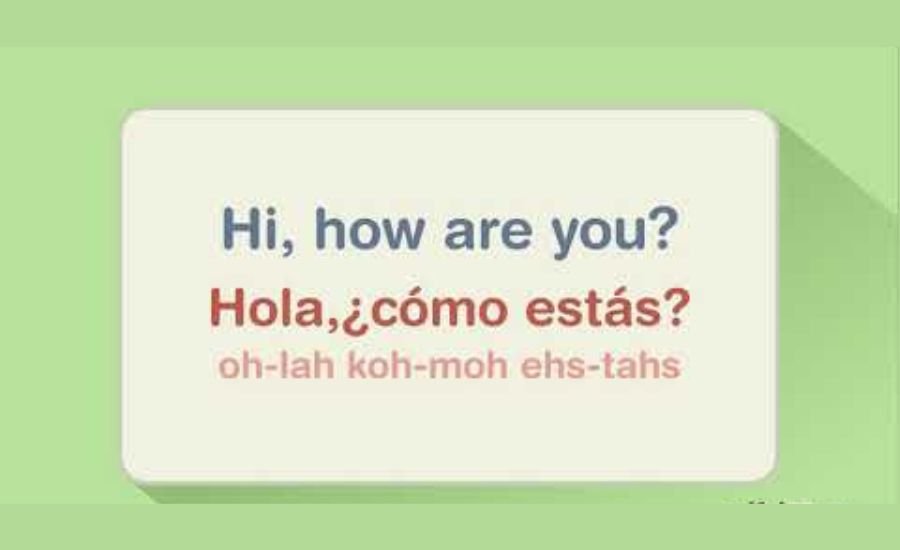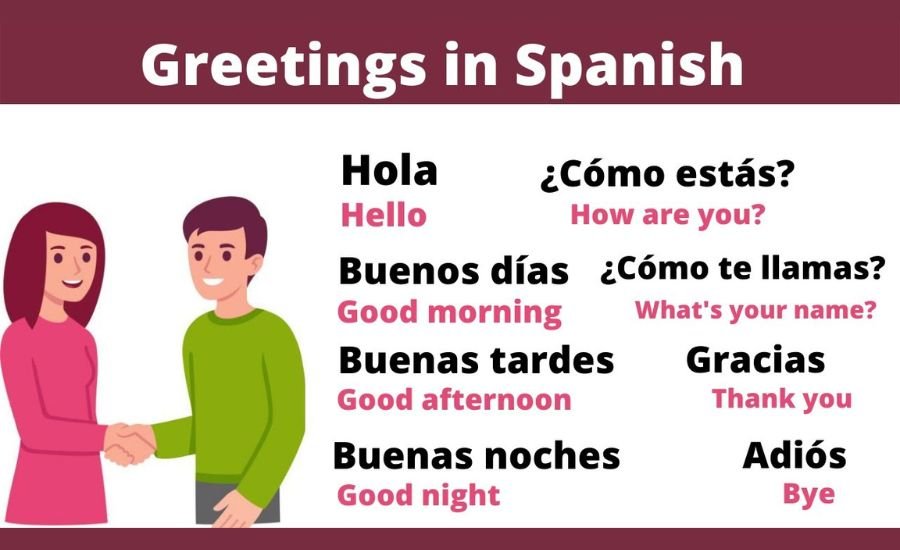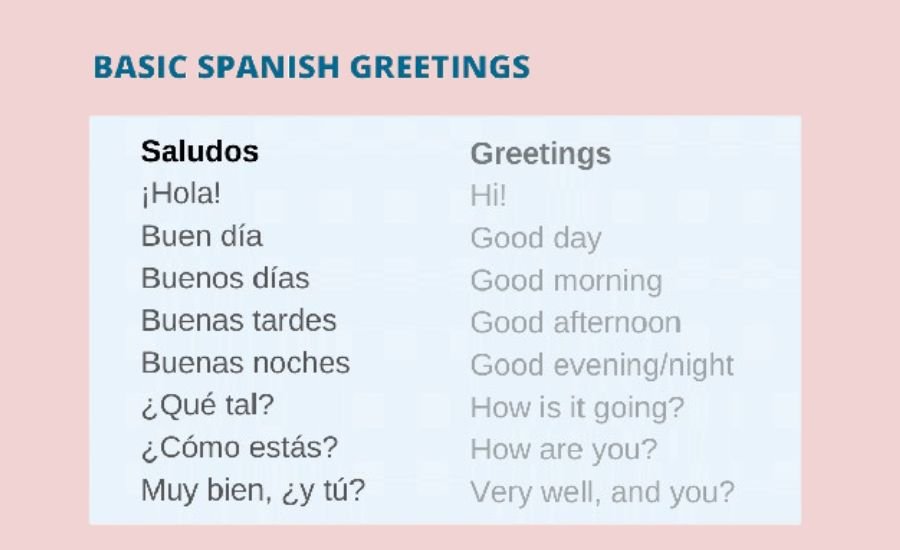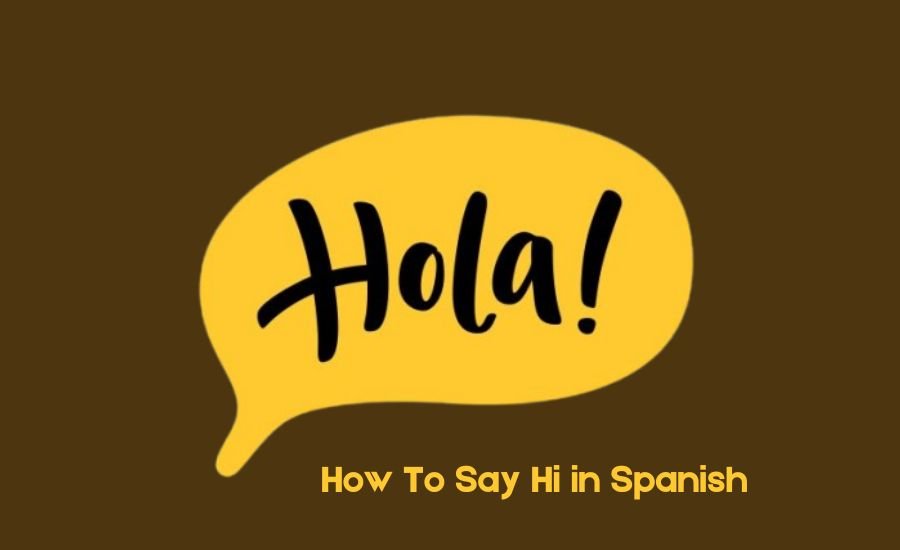Do you want to learn how to say hi in Spanish? It’s super easy and fun! Saying hi is the first step to making new friends, and Spanish is a great language to learn. We’ll teach you how to say hi in Spanish so you can greet people like a pro.
At thetuambia, we love sharing simple language tips. Whether you’re talking to a friend or meeting someone new, knowing how to greet in Spanish will make your conversation smooth and friendly. Let’s explore the best ways to say hi in Spanish!
How to Say Hi in Spanish the Simple Way
The easiest way to say hi in Spanish is by using “Hola.” This is a simple and polite greeting that works for everyone. You can say “Hola” in the morning, afternoon, or night.
People in Spain and Latin America use “Hola” all the time. You can tell your friends, family, or even someone new. This is the best way to start a conversation in Spanish. How to say Hi in Spanish?
If you want to be extra friendly, you can add a smile when saying “Hola.” This makes the greeting warm and welcoming.
Why Greetings Are Important in Spanish Culture
In Spanish-speaking countries, greetings are very important. People value politeness, and saying hi is a big part of social life.
When you greet someone properly, it shows respect. People appreciate when you make an effort to say hi in Spanish. In some places, a handshake or a small kiss on the cheek is common with greetings.
Spanish culture loves friendly communication. If you visit Spain or Latin America, always greet people warmly. This helps you make friends and connect with people easily. How to say Hi in Spanish?
Different Ways to Say Hi in Spanish

Besides “Hola,” there are many other ways to say hi in Spanish. Some greetings are formal, while others are informal.
For example, you can say “Buenos días” (Good morning), “Buenas tardes” (Good afternoon), or “Buenas noches” (Good evening). These are polite greetings used at different times of the day.
For informal greetings, you can use “¿Qué tal?” (How’s it going?) or “¡Hola, amigo!” (Hi, friend!). These are great for talking to close friends.
Formal Greetings in Spanish
When speaking to someone important, like a teacher or a boss, it’s best to use formal greetings.
“Buenos días” (Good morning) is a great choice before noon. In the evening, it is customary to say “Good afternoon.”. In the evening, it is appropriate to say “Good evening.”
Another formal way to greet someone is by saying “Saludos” (Greetings). This is a polite and respectful way to say hi in Spanish.
Informal Greetings for Friends and Family
If you are talking to friends or family, you can use informal greetings. These are fun and friendly ways to say hi in Spanish.
For example, “¡Hola, hola!” (Hello, hello!) is a playful way to greet someone. You can also say “¿Qué pasa?” (What’s up?) when talking to close friends.
Another informal greeting is “¿Cómo estás?” (How are you?). This is a great way to check on your friends and start a conversation.
Saying Hi in Spanish Based on the Time of Day
Spanish greetings can change based on the time of day. This makes your greeting more specific and polite.
“Buenos días” is used in the morning. It means “Good morning.” “Buenas tardes” is used in the afternoon. It means “Good afternoon.”
“Buenas noches” is used in the evening or at night. It can mean “Good evening” or “Good night.” This is a polite way to greet someone at different times.
How to Say Hi in Spanish Over Text or Online

People often greet each other over text or social media. If you want to say hi in Spanish in a message, you can type “Hola” or “¡Hola, amigo!”
You can also use short and fun greetings like “¿Qué tal?” or “¿Cómo estás?” These are friendly ways to start a chat.
If you want to be extra friendly, you can add emojis. A waving hand emoji (👋) or a smiling face (😊) makes your greeting more fun.
Fun and Playful Ways to Say Hi in Spanish
If you want to sound fun, you can use playful greetings.
For example, “¡Hola, hola!” (Hello, hello!) is a fun way to say hi. “¡Hey, qué onda!” (Hey, what’s up?) is another cool greeting.
Some say “¡Holita!” (Little hello) to sound extra cute. These fun greetings are great when talking to friends or kids.
Saying Hi in Spanish Like a Native Speaker
If you want to sound natural, listen to how native speakers say hi. They often speak fast and with a friendly tone. How to say hi in spanish?
Try using phrases like “¡Hola, qué tal!” (Hi, how’s it going?) or “¿Cómo va?” (How’s it going?). These sound natural and relaxed.
The best way to improve your Spanish greetings is to practice with native speakers. Watching Spanish movies or listening to Spanish songs can also help.
Common Mistakes When Saying Hi in Spanish
Many beginners make small mistakes when saying hi in Spanish. One common mistake is using informal greetings in formal situations. How to say hi in spanish?
For example, saying “¿Qué pasa?” to a teacher or boss is too casual. Instead, use “Buenos días” or “Saludos.”
Another mistake is forgetting the time of day. Saying “Buenas noches” in the morning is incorrect. Always match your greeting to the right time.
How to Respond When Someone Says Hi in Spanish
When someone greets you, it’s good to reply politely. If someone says “Hola,” you can simply say “Hola” back.
If they say “Buenos días,” you can reply with “Buenos días.” Matching their greeting is a polite way to respond.
You can also add a friendly question like “¿Cómo estás?” (How are you?). This makes the conversation flow naturally. How to say hi in spanish?
You Need To Know: How to write a Check
Teaching Kids How to Say Hi in Spanish

Teaching kids to say hi in Spanish can be fun! Start with “Hola” and practice using it in daily life.
Play games and sing songs to make learning fun. How to say hi in spanish? Kids love singing along to Spanish greetings.
Encourage kids to greet friends in Spanish. The more they practice, the better they will remember.
How to Say Hi in Spanish in Different Countries
Spanish is spoken in many countries, and greetings can change slightly. In Spain, people often say, “¡Hola, qué tal!” (Hi, how’s it going?).
In Mexico, people say “¡Qué onda!” (What’s up?). In Argentina, they say, “¡Che, hola!” (Hey, hello!).
Learning different greetings helps you understand regional Spanish.
Using Spanish Greetings in Travel
If you travel to a Spanish-speaking country, knowing how to greet people is important. Start with a friendly “Hola” and a smile.
Use “Buenos días” in the morning and “Buenas tardes” in the afternoon. This shows respect for local customs. How to say hi in spanish?
A simple “Hola” can help you make new friends and have a great travel experience.
Conclusion
Spanish is a fun and easy language to learn! How to say hi in spanish.The word “Hola” is the best way to start a conversation.
Using different greetings helps you sound more natural. Whether you are talking to friends or strangers, greeting people warmly is always a good idea.
You Should Know: How many seconds in a Day?
FAQs About How To Say Hi in Spanish
Q: What is the easiest way to say hi in Spanish?
A: The easiest way to say hi in Spanish is “Hola.” It can be used both in formal and informal settings.
Q: Can I say “Hola” in a formal setting?
A: Yes, “Hola” is appropriate for both formal and informal situations. You can also use “Buenos días” or “Saludos” for a more polite greeting.
Q: How do you say hi in Spanish in a casual way?
A: You can say “Hola, hola,” “¿Qué tal?” or “¿Qué me cuentas?” when greeting friends or family.
Q: What is a respectful way to greet someone in Spanish?
A: You can say “Buenos días” (Good morning), “Buenas tardes” (Good afternoon), or “Saludos” (Greetings) for a respectful tone.
Q: How do you greet someone at night in Spanish?
A: You can say “Buenas noches,” which means both “Good evening” and “Good night.”
Q: Is “Buenas” the correct way to say hi in Spanish?
A: Yes, “Buenas” is a short and friendly way to greet someone, especially in informal settings.
Q: How do you respond to “Hola” in Spanish?
A: You can say “Hola” back or use phrases like “¡Hola! ¿Cómo estás?” (Hi! How are you?)
Q: What are some fun ways to say hi in Spanish?
A: You can use “¡Hey!” “Holaaa!” (with extra “a” for excitement) or “Qué onda!” (What’s up?) in a fun, informal way.
